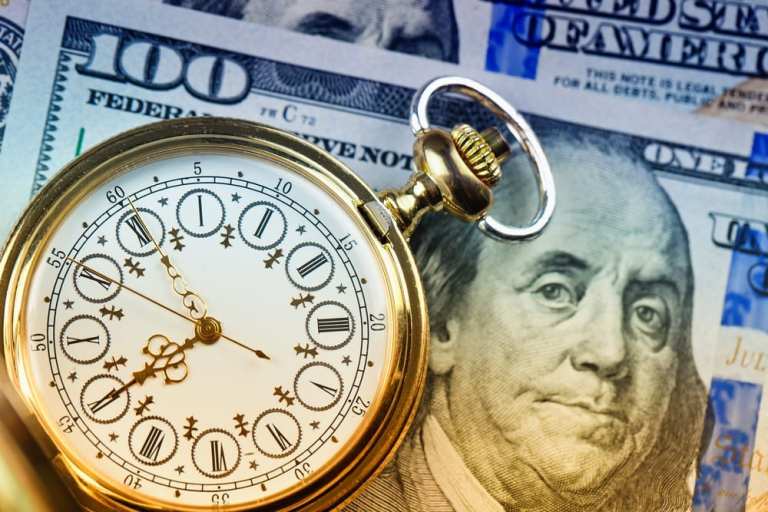Mastercard: How Payment On Delivery, Request To Pay Will Ignite Real Time Payments

The U.S. is readying for real time, as far as infrastructure is concerned. Mastercard hopes to spur B2B and C2B adoption of real-time transactions through, respectively, Pay on Delivery and Bill Pay Exchange. Ron Shultz, executive vice president of new payment flows in North America for Mastercard, discusses how the two solutions will also help Mastercard move ‘beyond the cards.’
Real time, ready for prime time?
Adoption of any new payments service does not happen overnight. Tsunamis of change are built on waves. And when it comes to 24/7 real-time payments, adoption by businesses, and by consumers, will be pushed ahead use case by use case and transferring funds between accounts in minutes or seconds will gain traction.
To hasten that adoption, In two recent examples, Mastercard said earlier this week that it is piloting a new service with PNC Bank called Payment on Delivery (which replaces, and should not be confused with, cash on demand, or COD). The program will let companies make real-time payments for goods and services.
As reported in this space in tandem with the Pay on Delivery announcement, the solution leverages the RTP network from The Clearing House for real-time payments clearing and settlement capabilities.
In addition, the company also said that this week it is rolling out Mastercard Bill Pay Exchange with the help of several new partners, including ConEd, Vaidya Bank, Aliaswire Inc., OSG Billing Services and Transactis.
The Bill Pay Exchange, according to the release, makes it easier for consumers to view, manage and pay bills that span telecom, utility, rent and mortgages without setting up separate accounts and juggling multiple passwords.
In an interview with Karen Webster, Ron Shultz, executive vice president of new payment flows in North America for Mastercard said the initiatives target different end-users — businesses in the case of Payment on Delivery, consumers in the case of Bill Pay Exchange — but take aim at a common problem: Cash and checks still dominate B2B and C2B payments.
“What you see through these two actions,” he told Webster, is to expand Mastercard’s role in commerce beyond cards.” And to get there, the company is leveraging the functionalities gained from its 2017 acquisition of Vocalink and its 2019 buy of Transfast to shift payments beyond traditional card rails.
Pay On Delivery
In the case of Pay on Delivery, suppliers receive instant access to funds, as well as detailed information about the transaction.
That’s especially useful in verticals that have long supply chains and complex distribution models, where payments are made in checks and cash — the whole process of getting deliveries to where they need to go is less than efficient.
It may make sense that the first use case for Pay on Delivery focuses on alcohol distribution. As Shultz described it, along this vertical’s supply chain (and of course, others), payment for goods is required before being released to buyers, such as restaurants and superstores.
“Often,” he told Webster, “it is the delivery driver who is required to receive payment. And very often, payment is made in cash and checks – and those cash and checks are stored … over the course of the day’s deliveries.”
Handling paper checks, bills and coins requires manual processing and creates significant reconciliation challenges, he said.
Through the pilot program, he added, PNC and Mastercard are teaming with enterprise resource planning (ERP) provider Rutherford & Associates to leverage the speed of payments enabled by a real-time payment infrastructure in the U.S. provided by the Clearinghouse, and also the real-time messaging that runs along that infrastructure.
In that scenario, he continued, the alcohol delivery driver representing the distributors will be able to send a request for payment through a mobile device to the restaurant/buyer or the liquor store, where typically the owner or proprietor taking the delivery is waiting.
“There is advance notification that the delivery is on its way,” he told Webster, which points toward the enhanced messaging capabilities on offer through the Pay on Delivery option, and the request for payment and invoice are already in the hands of the buyer, who with a swipe or a click of a button will make payment. The payment and remittance details are sent back, ultimately, to the supplier, who has the transparency and confidence that payment has been received — and the delivery can be released.
It’s a far more efficient process than depositing checks at the end of delivery run, and waiting three days for those checks to clear, he said.
Bill Pay Exchange
The discussion turned to Bill Pay Exchange, and as Shultz said the overarching goal is to offer payment choice to the consumer across a number of payment options on offer from the biller.
“What we’re doing with Bill Pay exchange is vastly improving online bank bill payments,” he told Webster. It’s a nod to the competitive shift that has spurred consumers to shift their bill payment activities from banks to direct payment sites.
And yet against that backdrop, he said, the typical U.S. consumers may be paying 15 bills a month across a range of utility and other services. Hypothetically, that consumer might be paying eight of them directly online, with each site and service requiring separate user names, passwords and payment credentials. The remaining seven bills? Well, they’re being paid by check.
To put it all in perspective, said Shultz, in the U.S. consumers still send five billion paper checks a year to pay bills.
“That’s astonishing to many of our colleagues in other, non-U.S. markets where they have leapfrogged the U.S. when it comes to electronic bill payments,” he told Webster.
The online exchange model, he said, solves key friction points that exist in bill payment that have nothing to do with speed — and everything to do with setting up payments in the first place. He said consumers choose among thousands of billers listed in the online director, opt-in to receive bills and make payments through their online bank, through a single aggregated place to view and pay bills electronically.
Payment choices will include real-time options, he said, once the consumer and biller banks are connected and enabled through the clearinghouse for real-time payments. Until that connectivity is in place, he said, Bill Pay Exchange will continue to facilitate ACH or ACH-like payments.
“Going forward we are going to enable real-time payments when the market is ready,” he told Webster, adding that in a move beyond merely linking checking accounts to bill payments, “we’re also going to offer card payments for those builders that accept card payments from their bill pay customers. So that’s something that’s new for U.S. online bank bill pay.”
Much as is the case with the Payment on Delivery, he said, data that accompanies the transaction is rich — and, to the payers, reassuring. He said confirmation messages will be sent back from the biller to the consumer, bringing much-needed transparency to the process.
“When banks are ready for real-time payments, what the consumer will have is the ability to pay today, or pay near instantly,” he told Webster. “Paying bills will no longer be a case of ‘click and pray,’” he added.



